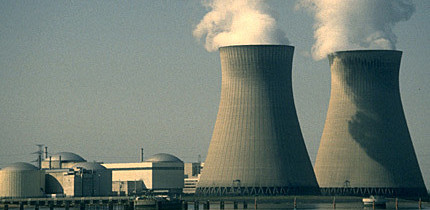Nuclear Plants Should Focus on Risks Posed by External Events, Study Says
Engineers at American nuclear plants have been much better at calculating the risk of an internal problem that would lead to an accident than they have at figuring the probability and consequences of accidents caused by events outside a plant, a report released Thursday by the National Academy of Science said. Accidents that American reactors are designed to withstand, like a major pipe break, are “stylized” and do not reflect the bigger source of risk, which is external, according to the study. That conclusion is one of the major lessons from the Fukushima Daiichi nuclear accident in Japan in 2011, which began after an earthquake at sea caused a tsunami.The Nuclear Regulatory Commission calculates which problems are most likely and most troublesome, and aims to find components or systems that should be improved.
B. John Garrick, a nuclear engineering consultant and vice chairman of the two-year study, said that engineers had more experience calculating the probability of failure in a valve or a pipe than in predicting earthquakes or floods. Better predictions of such events were possible, he said.
The study, ordered by Congress after the triple meltdown at Fukushima Daiichi’s reactors, said that the Nuclear Regulatory Commission and the American nuclear industry should focus on the main sources of risk: accidents set off by “extreme external events,” like earthquakes or floods; multiple human or equipment failures; and “violations of operational protocols.”
Fukushima Daiichi fits the first category; the explosion of the Chernobyl reactor in Ukraine in 1986 fits the second, since technicians had disabled critical safety systems for an unauthorized experiment. The Three Mile Island meltdown near Harrisburg, Pa., in 1979 was in the third category, with human error piled on equipment failure.
The report said that the Nuclear Regulatory Commission and the industry should “strengthen their capabilities for identifying, evaluating and managing risks” from beyond the accidents they now design plants to withstand.
Reactor operators should prepare to improvise in an emergency, the study said. Robert A. Bari, a nuclear engineer at the Brookhaven National Laboratory in New York, said operators should be trained to handle accidents “that may not turn out to be exactly as predicted in a textbook.”
Emilie M. Roth of Roth Cognitive Engineering in Menlo Park, Calif., said that in current training “they do try to provide the operators with some opportunities to go a little beyond the available procedures,” but that the industry should do more.
Since Fukushima, American reactors have stocked up on hoses, portable pumps, canisters of compressed gas and similar gear for ad hoc solutions, called FLEX. The industry opened depots recently in Phoenix and Memphis to store spare emergency equipment that could be shipped overnight to a power plant.
The study reflected the safety situation at the time it began, the authors said. The authors noted that the Nuclear Regulatory Commission had turned more attention to external sources. The Nuclear Regulatory Commission has pushed most of the reactor operators in the United States to re-evaluate thevulnerability of their plants to earthquake because of increased earthquake estimates by the United States Geological Survey.
The United States should study costs not currently accounted for in making cost-benefit analyses about safety, like the expense of decontaminating areas distant from the plant, which the authors said was another lesson of Fukushima.
Psychological and social costs of evacuation or “sheltering in place,” meaning the confinement of people to homes, should also be considered, the study said, and so should decision-making about resettling people who had been evacuated because of the release of radioactive material.
And if two reactors at the same site had an accident at the same time, the study said that staffing might be inadequate for an event of long duration.
Congress also asked the academy to study the safety of spent-fuel storage,an area of concern since the Japanese accident. In the Fukushima accident, American officials became convinced — mistakenly — that water had drained or boiled from a pool of spent fuel and they urged Americans in Japan to stay 50 miles away. But the academy has not finished that part of its study.
Fonte: The New York Times



